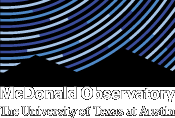Winners of McDonald Observatory’s 75th Anniversary Art Contest Announced
FORT DAVIS — McDonald Observatory announced the winners of its art contest for school kids in Jeff Davis, Presidio, and Brewster counties at its Open House on April 26. The contest, part the observatory’s year-long celebration of its 75th anniversary, received 127 entries in two categories (junior high-high school and elementary school). They were judged on creativity and representation of the spirit of the anniversary celebration.

